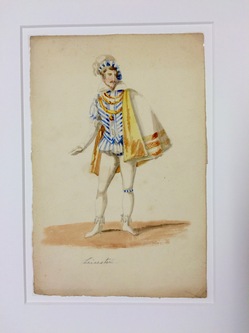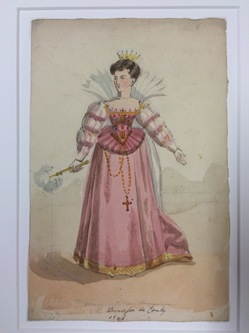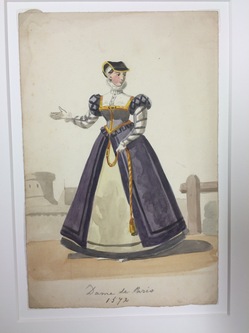Try as I might, I can never seem to internalize the fact that people in Shakespeare’s time really wore the tights and ruffs and doublets as fashion. I can’t picture anyone choosing to wear that unless it was a joke, or a costume party, although that is probably just an effect of the fact that I’m commenting on these fashions ~450 years in the future (I guess skinny jeans are sort of like the modern version of Elizabethan hose so I really can’t talk), but regardless, I can’t see those outfits without interpreting them as a throwback to Shakespeare rather than a representation of the world at that time – Shakespeare is likely the most culturally significant person from that time, but all over the world people dressed somewhat similarly, and seeing a whole style of dress as a reference to a playwright whose work is often not performed in Elizabethan dress ignores the trend of fashion all over Europe.
For your viewing pleasure today I have a few images of French nobility dressed as they would have been in the late 1500s. Side note: the sassy hand gestures in most portraits of people from the past consistently give me happiness.

 These pictures have some elements that remind me of the French period dramas I love so much: the socks with the tie at the top, the fan that Lady In Pink carries. The rest of the clothing – the wide skirts, the almost ludicrously large ruffs, the doublets, and yes, the hose – are all staples of Elizabethan fashion. As it turns out, ruffs were clothes for both the nobility and the lower classes – after the addition of starch, they could be worn over and over again, and thus became popular for many classes of people. These outfits were normal for everyone.
These pictures have some elements that remind me of the French period dramas I love so much: the socks with the tie at the top, the fan that Lady In Pink carries. The rest of the clothing – the wide skirts, the almost ludicrously large ruffs, the doublets, and yes, the hose – are all staples of Elizabethan fashion. As it turns out, ruffs were clothes for both the nobility and the lower classes – after the addition of starch, they could be worn over and over again, and thus became popular for many classes of people. These outfits were normal for everyone.
More interesting to me (besides reminiscing about historical fashion in movies) is my reaction to seeing people in these clothes. As I mentioned, my first thought upon seeing these, and likely the first thought for many other people, is, “Whoa. Shakespeare throwback.” History tends to crystallize into the greatest hits of a century or a decade or what have you; Elizabethan times are Shakespeare and the plague and ruffs, for me. My focus on Shakespeare makes me wonder what other history and life I’m unaware of; of course, Shakespeare is the most talented playwright of that time, but just because J.K. Rowling is the most successful young adult fiction writer of our time doesn’t mean that everything else in that genre is worthless.
In terms of this SURP, my time is almost up; I have one more week (and one more blog post!) to go. If you’ve liked the sort of analysis my co-researchers and I have been putting forward, come see the exhibit in Spring 2016, and come talk to us at the poster conference this September 3!

